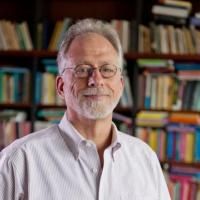The fulfillment of others' needs elevates children's body posture.
Date
2017-01
Journal Title
Journal ISSN
Volume Title
Repository Usage Stats
views
downloads
Citation Stats
Attention Stats
Abstract
Much is known about young children's helping behavior, but little is known about the underlying motivations and emotions involved. In 2 studies we found that 2-year-old children showed positive emotions of similar magnitude-as measured by changes in their postural elevation using depth sensor imaging technology-after they achieved a goal for themselves and after they helped another person achieve her goal. Conversely, children's posture decreased in elevation when their actions did not result in a positive outcome. These results suggest that for young children, working for themselves and helping others are similarly rewarding. (PsycINFO Database Record
Type
Department
Description
Provenance
Subjects
Citation
Permalink
Published Version (Please cite this version)
Publication Info
Hepach, Robert, Amrisha Vaish and Michael Tomasello (2017). The fulfillment of others' needs elevates children's body posture. Dev Psychol, 53(1). pp. 100–113. 10.1037/dev0000173 Retrieved from https://hdl.handle.net/10161/13633.
This is constructed from limited available data and may be imprecise. To cite this article, please review & use the official citation provided by the journal.
Collections
Scholars@Duke

Michael Tomasello
Major research interests in processes of social cognition, social learning, cooperation, and communication from developmental, comparative, and cultural perspectives. Current theoretical focus on processes of shared intentionality. Empirical research mainly with human children from 1 to 4 years of age and great apes.
Unless otherwise indicated, scholarly articles published by Duke faculty members are made available here with a CC-BY-NC (Creative Commons Attribution Non-Commercial) license, as enabled by the Duke Open Access Policy. If you wish to use the materials in ways not already permitted under CC-BY-NC, please consult the copyright owner. Other materials are made available here through the author’s grant of a non-exclusive license to make their work openly accessible.
